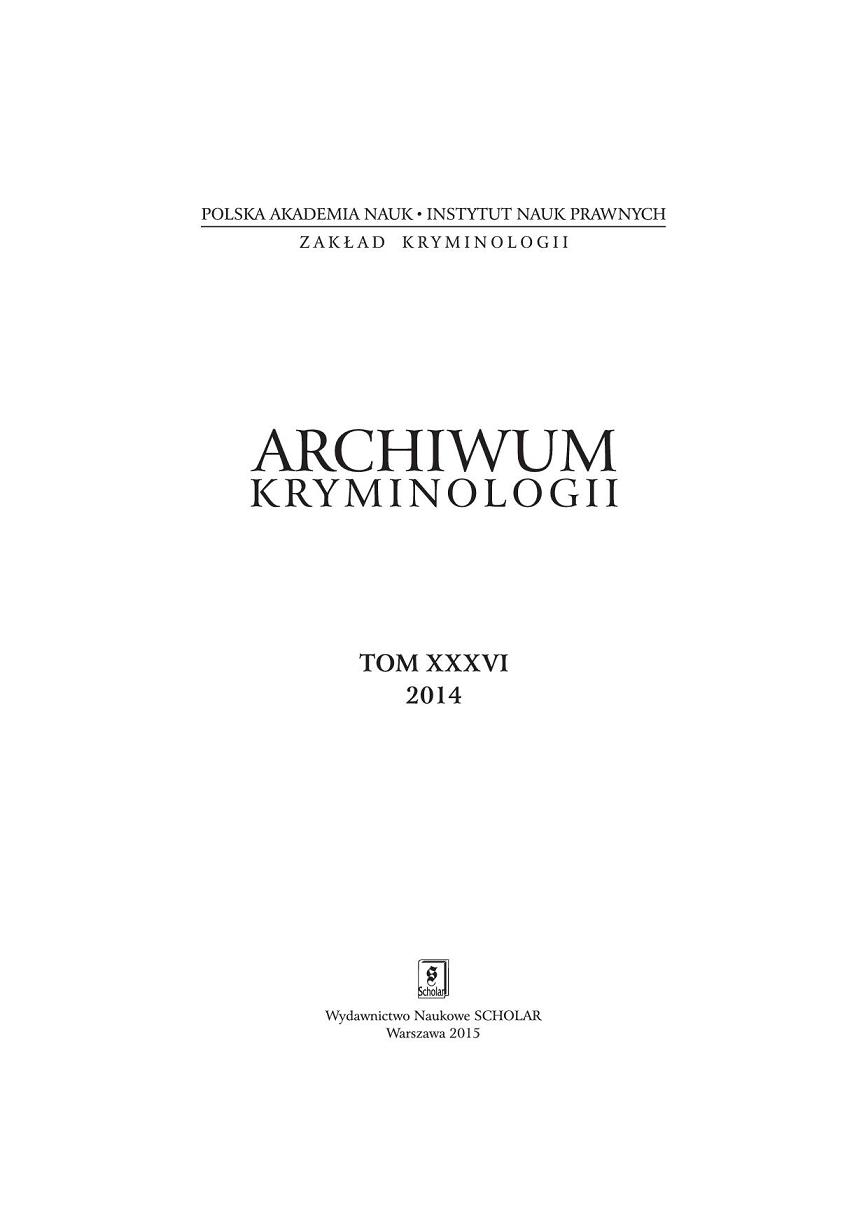Dwa razy Lombroso, czyli o skutkach różnic w podejściu kryminologii pozytywistycznej i kryminologii feministycznej
Twice Lombroso: The Consequences of the Differences in Approach Between Positivist and Feminist Criminology
Author(s): Monika PłatekSubject(s): Law, Constitution, Jurisprudence
Published by: Instytut Nauk Prawnych PAN
Keywords: positivist criminology; feminist criminology;
Summary/Abstract: Dwa razy Lombroso [Twice Lombroso] considers differences in the diagnoses and conclusions pivotal to criminal law and to criminal and social policy by way of a specific example. It would seem that so long as we rely on an accepted research paradigm, we are equipped to verify not only the validity of a theory, but also the social consequences of explaining pathological behaviour and criminality in a particular way. The story of Saartjie “Sarah” Baartman illustrates how positivist and feminist methodologies in criminality result in very different views of reality. The latter forces us to consider issues that have so far been ignored in the criminological literature. The genesis and evolution of criminology has clearly contributed to the development and modernisation of criminal law theory. Discarding the theory of free will has forced theoreticians to confront social realities when considering the creation and application of the law. What has gone unnoticed, however, is that criminology has also helped justify the creation and application of special criminal law institutions from the outset. Racism, racist practices, and the exclusion of certain groups in order to show authority and justify curtailing liberties under the pretext of having to ensure safety and social order have all been vindicated and cloaked in academic respectability with the assistance of criminology. Nowadays, it is often tempting to think that there is such a thing as safety from birth or through osmosis. On the one hand, this sometimes justifies creating separate institutions with the word “criminology” in the name. On the other hand, under the pretext of treatment, therapy or eliminating threats, it can justify maintaining institutions that greatly contribute to the arbitrary exclusion of individuals who are instrumentally exploited or deemed troublesome in order to show strength or demonstrate political efficiency. The text does not attempt to create a dichotomy of good and bad criminology. It is not about demonstrating that positive criminology is archaic and feminist criminology up-to-the-minute. It is rather a scholarly reflection on knowledge standards and on the consequences and hazards that flow from recognising a given claim as scholarly. The text, then, is merely a reflection on what characterises the feminist approach to criminology and what this approach contributes to the discipline. It also attempts to look at the beginnings of the evolution of criminology from a feminist criminological perspective. By illustrating how the work of Lombroso can be examined, described and appraised in terms of positivist and feminist criminology, I try to show how different descriptions of the reality (pathology) of criminality can be arrived at depending on whether we study it on the basis of positivist criminology or whether we also approach the problem from a feminist perspective appropriate for criminology.
Journal: Archiwum Kryminologii
- Issue Year: 2014
- Issue No: XXXVI
- Page Range: 31-74
- Page Count: 44

